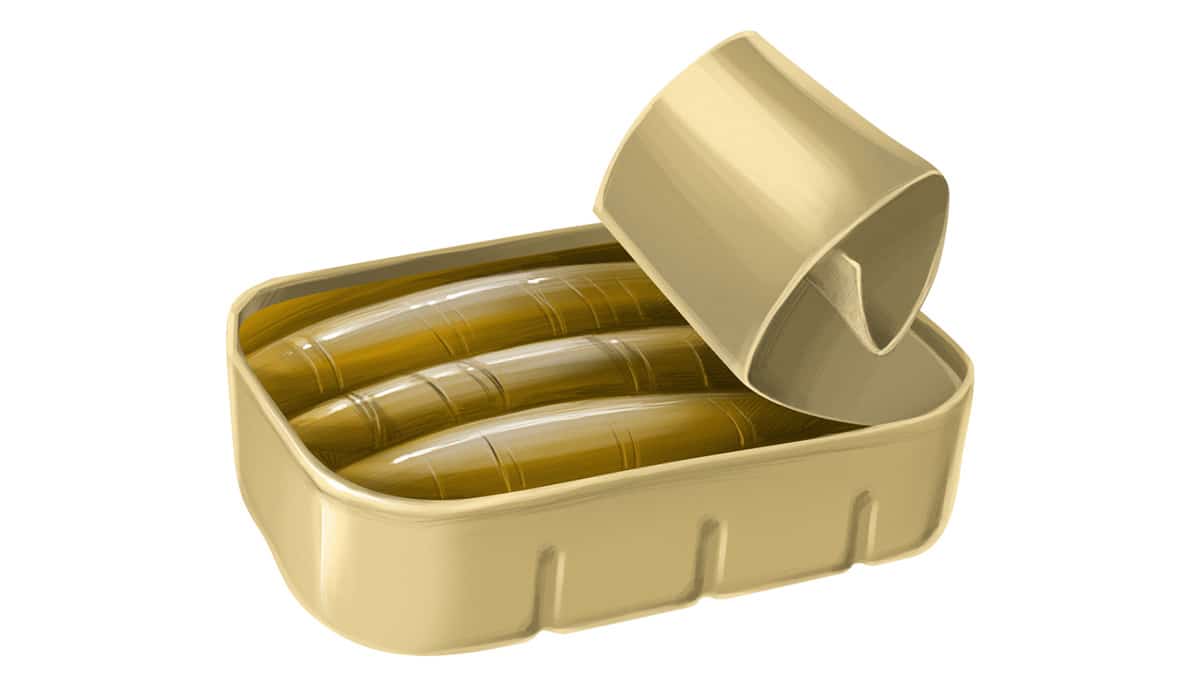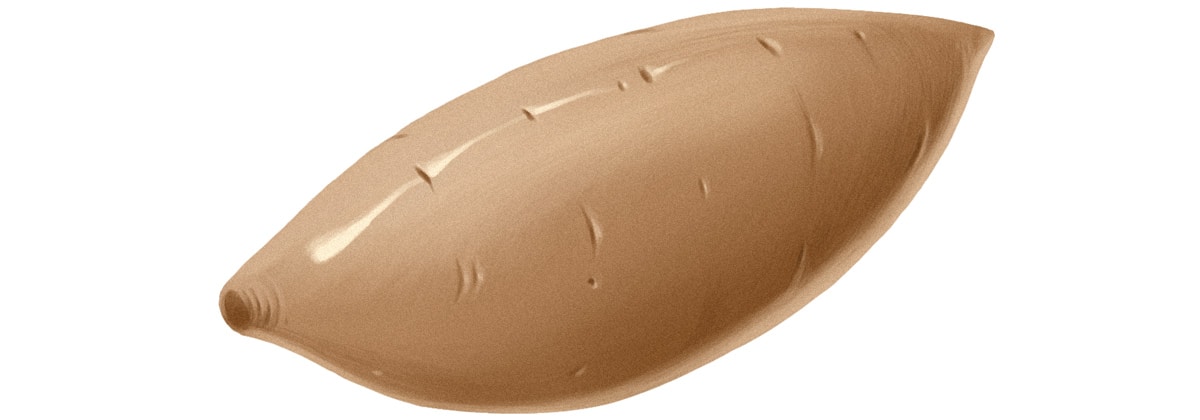It can be tempting to think of fat cells as inactive energy storage units, kind of like batteries for people. By that logic, all you need to lose weight is a calorie deficit to empty the “batteries” and you’re set. But fat cells aren’t nearly that passive:
- Fat cells send hormonal signals to other parts of the body. These signals affect hunger, appetite, and insulin sensitivity, among other critical body functions.
- Fat cells receive signals from other parts of your body. These signals can change the size of fat cells, change the way genes are expressed in fat cells, and promote or prevent the growth of new fat cells, among other things.
Unfortunately, this can set up a vicious cycle of weight gain: first, overeating (or eating lousy, inflammatory food) sends signals that encourage fat cells to swell up and get bigger. This is called hypertrophy and it’s typically how adults gain weight. When the fat cells swell up, normal blood flow to the cells is restricted, which stops them from functioning normally. The swollen fat cells then start sending inflammatory signals that drive overeating, which causes more weight gain, which only makes the hypertrophy worse, and so on.
It’s true that hypothetically, you could ignore the hunger signals and white-knuckle it out on a calorie deficit and lose weight - to all the calorie purists out there, yes, it’s physiologically possible to brute-force weight loss via calorie reduction. But in terms of things real humans can tolerate without going insane, it makes a lot more sense to try to get fat cells on board with the weight-loss project so that it’s less difficult.
That’s where diet quality and lifestyle come in. Independently of calorie/energy restriction, diet quality and lifestyle changes can really help get your fat cells prepped and ready for easier weight loss and better metabolic health.
Take a look at 4 ways Paleo can help with fat cell reprogramming:
1. A Paleo diet is rich in taurine-rich animal foods

The short version: the Paleo menu is full of taurine-rich animal foods, which help guide fat cells towards weight-loss mode.
Taurine is an an amino acid found only in animal foods. Dark poultry meat (either chicken or turkey) and fish are some of the best sources.
OK, so what does this have to do with fat cells? Taurine is incredibly useful for regulating inflammation and gene expression in fat tissue. In fat cells, taurine increases the expression of genes related to energy expenditure and increases the level of PPAR gamma in fat cells. PPAR gamma is a receptor that plays a huge role in keeping fat cells healthy and preventing obesogenic changes. By increasing levels of PPAR gamma, taurine helps shift fat cells towards burning more calories and assisting in weight loss.
Taurine also generally reduces inflammatory signaling in fat cells and helps improve insulin sensitivity of fat tissue.
All of those studies are born out in this one. The researchers noted that people with obesity often have low levels of taurine. So they gave obese women taurine supplements for 8 week - the extra taurine reduced inflammation and significantly increased adiponectin, a protein produced in fat cells that improves insulin sensitivity.
In other words, eat more delicious chicken thighs; your fat cells will be happier for it.
2. Paleo encourages stress management - especially chronic stress
The short version: Paleo is a lifestyle, not just a diet, and the stress-management parts of that lifestyle reduce fat cell growth and inflammation.
Chronic stress is what happens when your “fight or flight” response is turned on all day, every day. The human body has a very powerful physiological stress response, which is really wonderful and helpful if your problem is a short-term crisis like “I need to lift this car off my kid” or “I need to run away from this hungry lion.” But that response causes a lot of problems if it’s turned on all day, every day.
In fat cells, chronic stress increases the release of a messenger called Neuropeptide Y (NPY). NPY and the activation of NPY receptors causes inflammation in fat tissue and make it easier for new fat cells to grow. This is especially true in the context of a high-fat/high-sugar diet. Even worse, NPY increases the growth of visceral fat - that’s the really dangerous fat around organs.
By reducing chronic stress, you’ll reduce the release of NPY in your fat cells, which reduces inflammation and fat cell growth. There’s no one single form of stress management that works for everyone, but here are some suggestions: breathing exercises, spending time in nature, meditation, yoga, good nutrition, and getting enough sleep.
3. Paleo emphasizes Omega-3-rich seafood
The short version: On top of the general anti-inflammatory benefits of eating Paleo, the focus on seafood rich in Omega-3 fats helps push fat cells in the right direction.

Chronic low-level inflammation is one major factor in fat cell growth and obesity in general. Paleo is an anti-inflammatory diet in general, so it’s reasonable to assume that it would be helpful - but “reasonable to assume” isn’t as good as actual scientific evidence. So take a look at one anti-inflammatory component of the Paleo food pyramid: omega-3 fats, found in fish and seafood.
In this group of subjects, Omega-3-rich fish oil increased the expression of a gene called lipoprotein lipase in fat tissue. Lipoprotein lipase in fat cells helps remove triglycerides from the bloodstream, which improves metabolic health. As this study explains, high LPL activity is a hallmark of good fat cell health and low LPL activity is a hallmark of obesity.
At least in animal studies, Omega-3 fats help protect fat cells from the damage caused by a junk food diet. Normally, a junk food diet causes fat cells to swell up and start shifting towards obesogenic behavior, but (again, in mice) omega-3 fats can dramatically reduce that effect. Coupled with the human evidence above, the case is looking pretty good for the omega-3s.
The best sources of Omega-3 fats are fatty fish, like salmon, mackerel, and sardines. Here's one tasty suggestion: salmon with lemon butter and capers.
4. Paleo carbs are quality carbs
The short version: by focusing on fiber-rich carb sources that don’t cause huge blood sugar spikes, Paleo helps reprogram fat cells for easier weight loss.

In this study, the researchers compared two weight-loss diets: one was low-carb and the other was low-fat. Both diets improved gene expression in fat cells about equally; there wasn’t really an advantage from the low-carb diet. (Of course, there wasn’t a disadvantage of low-carb either, so if low-carb works for you, this isn’t a reason to stop doing it).
But there is evidence that carb quality can help. In this study, subjects ate one of two diets. Diet 1 was designed to include carbs that cause a really high insulin spike after eating. Diet 2 was designed to cause a lower insulin spike.
- Fat cells shrank (hypertrophy was reversed) in the low-insulin group only
- Gene expression in fat tissue was significantly different between the two group. One notable finding was that genes related to oxidative stress and inflammation were upregulated in the high-insulin-response diet.
Neither of the diets was Paleo (both were based on grain), but this study shows that carb quality has a big impact on gene expression in fat cells. Focusing on whole-food carb sources, like sweet potatoes, that don't cause big insulin spikes, might be a good strategy.
In short: carb quality seems to be key for healthy fat cells, and Paleo definitely delivers on that front.
Summing it Up
When people talk about reasons that diet quality helps with weight loss, totally independent of calorie-counting, this is (partly) what they mean. Eating taurine-rich animal foods, managing stress, getting plenty of omega-3 fats, and focusing on high-quality carbs can all help shift fat cells in a more metabolically healthy, weight-loss friendly direction.
Essentially, these are all ways of getting fat cells to act like a thin and healthy person’s fat cells instead of like an obese and diabetic person’s fat cells. That makes weight loss easier from a hormonal perspective - it’s one reason why Paleo works.





Leave a Reply